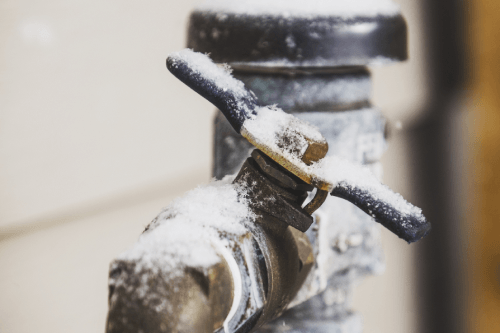Crucial Tips to Avoid Frozen Plumbing in Cold Weather: Professional Guidance
Crucial Tips to Avoid Frozen Plumbing in Cold Weather: Professional Guidance
Blog Article
They are making a number of great annotation regarding How to Prevent Your Pipes From Freezing overall in the article following next.

Winter can damage your pipes, especially by freezing pipelines. Below's how to prevent it from taking place and what to do if it does.
Intro
As temperatures decrease, the risk of icy pipelines boosts, potentially bring about costly repair services and water damage. Comprehending just how to avoid frozen pipes is critical for home owners in chilly climates.
Prevention Tips
Insulating at risk pipes
Wrap pipes in insulation sleeves or use warmth tape to safeguard them from freezing temperatures. Concentrate on pipelines in unheated or outside locations of the home.
Home heating strategies
Maintain indoor rooms adequately heated up, specifically locations with pipes. Open cupboard doors to allow cozy air to distribute around pipes under sinks.
Exactly how to identify frozen pipes
Search for reduced water flow from taps, uncommon odors or noises from pipes, and noticeable frost on revealed pipes.
Long-Term Solutions
Structural modifications
Take into consideration rerouting pipes away from outside walls or unheated areas. Add additional insulation to attics, basements, and crawl spaces.
Updating insulation
Buy premium insulation for pipelines, attic rooms, and walls. Appropriate insulation helps preserve regular temperatures and lowers the danger of icy pipelines.
Safeguarding Outside Plumbing
Yard hoses and outside taps
Separate and drain garden hoses prior to winter months. Install frost-proof faucets or cover exterior taps with shielded caps.
Recognizing Icy Pipelines
What triggers pipes to freeze?
Pipes ice up when revealed to temperature levels below 32 ° F (0 ° C) for expanded durations. As water inside the pipes ices up, it broadens, putting pressure on the pipe wall surfaces and potentially causing them to burst.
Dangers and problems
Frozen pipelines can lead to water system disruptions, residential property damage, and costly fixings. Burst pipes can flooding homes and trigger extensive structural damage.
Indications of Frozen Water Lines
Recognizing frozen pipes early can prevent them from breaking.
What to Do If Your Pipes Freeze
Immediate activities to take
If you presume frozen pipelines, keep taps available to ease pressure as the ice melts. Use a hairdryer or towels soaked in warm water to thaw pipelines gradually.
Conclusion
Stopping icy pipes requires proactive steps and quick reactions. By comprehending the causes, indicators, and safety nets, house owners can safeguard their plumbing during cold weather.
5 Ways to Prevent Frozen Pipes
Drain Outdoor Faucets and Disconnect Hoses
First, close the shut-off valve that controls the flow of water in the pipe to your outdoor faucet. Then, head outside to disconnect and drain your hose and open the outdoor faucet to allow the water to completely drain out of the line. Turn off the faucet when done. Finally, head back to the shut-off valve and drain the remaining water inside the pipe into a bucket or container. Additionally, if you have a home irrigation system, you should consider hiring an expert to clear the system of water each year.
Insulate Pipes
One of the best and most cost-effective methods for preventing frozen water pipes is to wrap your pipes with insulation. This is especially important for areas in your home that aren’t exposed to heat, such as an attic. We suggest using foam sleeves, which can typically be found at your local hardware store.
Keep Heat Running at 65
Your pipes are located inside your walls, and the temperature there is much colder than the rest of the house. To prevent your pipes from freezing, The Insurance Information Institute suggests that you keep your home heated to at least 65 degrees, even when traveling. You may want to invest in smart devices that can keep an eye on the temperature in your home while you’re away.
Leave Water Dripping
Moving water — even a small trickle — can prevent ice from forming inside your pipes. When freezing temps are imminent, start a drip of water from all faucets that serve exposed pipes. Leaving a few faucets running will also help relieve pressure inside the pipes and help prevent a rupture if the water inside freezes.
Open Cupboard Doors
Warm your kitchen and bathroom pipes by opening cupboards and vanities. You should also leave your interior doors ajar to help warm air circulate evenly throughout your home.

Hopefully you enjoyed reading our piece on Preventing and dealing with frozen pipes. Thank you for taking time to read through our post. Are you aware of someone else who is looking into the niche? Be sure share it. I am grateful for your time. Revisit us soon.
Appointment Report this page